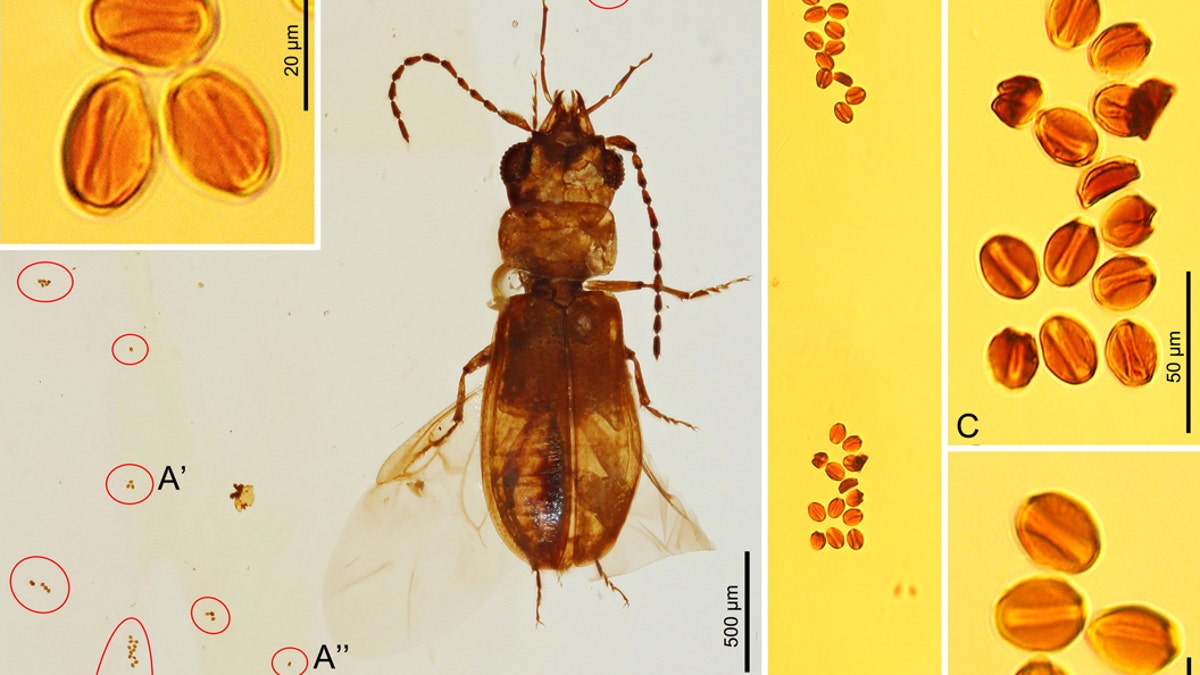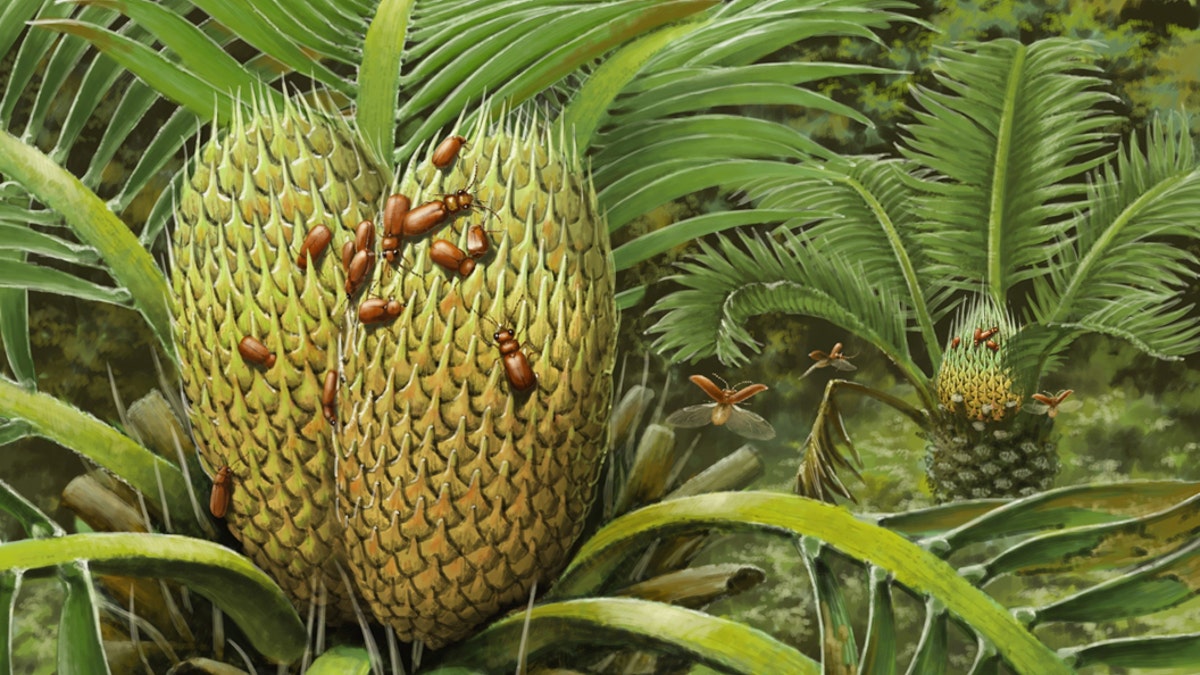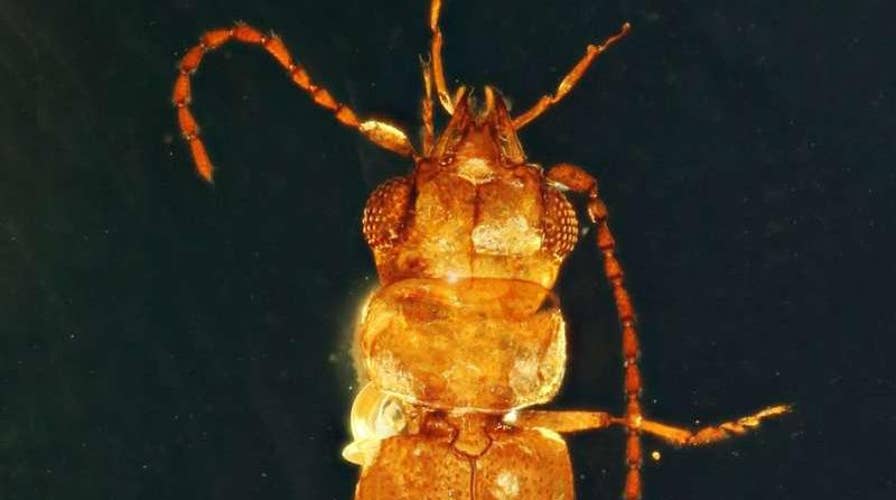A 99-million-year-old beetle found with pollen
A 99-million-year-old beetle was found in Amber in Myanmar. This makes it the earliest definitive fossil evidence of beetles possible helping pollinate cycads.
Welcome to Jurassic Bark – tree bark, that is.
The remains of a 99-million-year old beetle have been discovered, perfectly preserved in amber, fossilized resin that originates from the bark of a tree. It is believed to be the world's oldest insect pollinator and the amber provides a fascinating look at how life was like at the height of the age of dinosaurs.
"Boganiid beetles have been ancient pollinators for cycads since the Age of Cycads and Dinosaurs," said University of Bristol research fellow and lead author Chenyang Cai in a statement. Cycads are ancient plants.
GIANT PTEROSAUR SPORTED 110 TEETH AND 4 WICKED FANGS

Cycad pollen grains associated with C. cycadophilus (Credit: NIGPAS)
Dr. Cai continued: "Our find indicates a probable ancient origin of beetle pollination of cycads at least in the Early Jurassic, long before angiosperm dominance and the radiation of flowering-plant pollinators, such as bees, later in the Cretaceous."
The findings have been published in the scientific journal Current Biology. The fossilized amber was originally found in the town of Tanai, in northern Myanmar, by Diying Huang, Dr. Cai's supervisor.
Dr. Cai added that such a find is remarkable, given its level of detail, down to the adapted cavities in its jaws.
"It is remarkable several aggregations of exquisitely preserved pollen grains are located along the left side of the fossil beetle and with two pollen grains close to the head," said Dr. Cai in comments obtained by the Daily Mail.
The beetle, named Cretoparacucujus cycadophilus, is distinct in its form, compared to today's beetles. It had a large head, slightly wider ithan ts thorax, sharp claws, big antennae and giant, protruding eyes.
Additionally, its large mandibles suggest the bettle likely pollinated cycads, according to Dr. Cai's supervisor, Diying Huang.
Although the finding of Cretoparacucujus cycadophilus is remarkable in both its level of detail and age, Dr. Cai believes that additional beetles from that era and perhaps even older, have yet to be found.

This illustration is an ecological reconstruction of the mid-Cretaceous beetle Cretoparacucujus burmiticus. (Credit: Chenyang Cai)
The one thing that is stopping him? It's likely that Jurassic-era beetles are found as compression fossils, and not trapped in amber, leaving the clues of the past to remain a mystery.
Follow Chris Ciaccia on Twitter @Chris_Ciaccia
